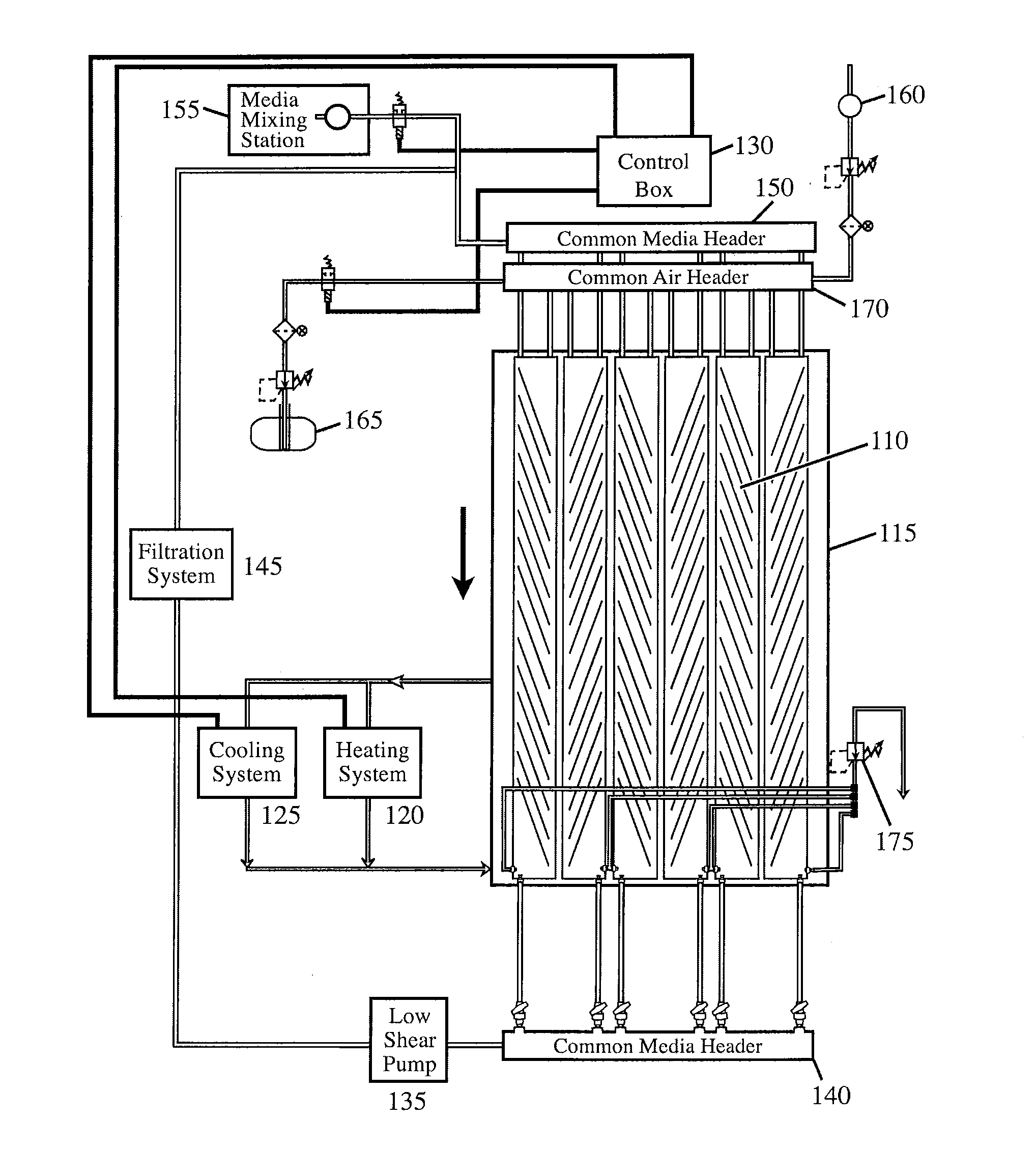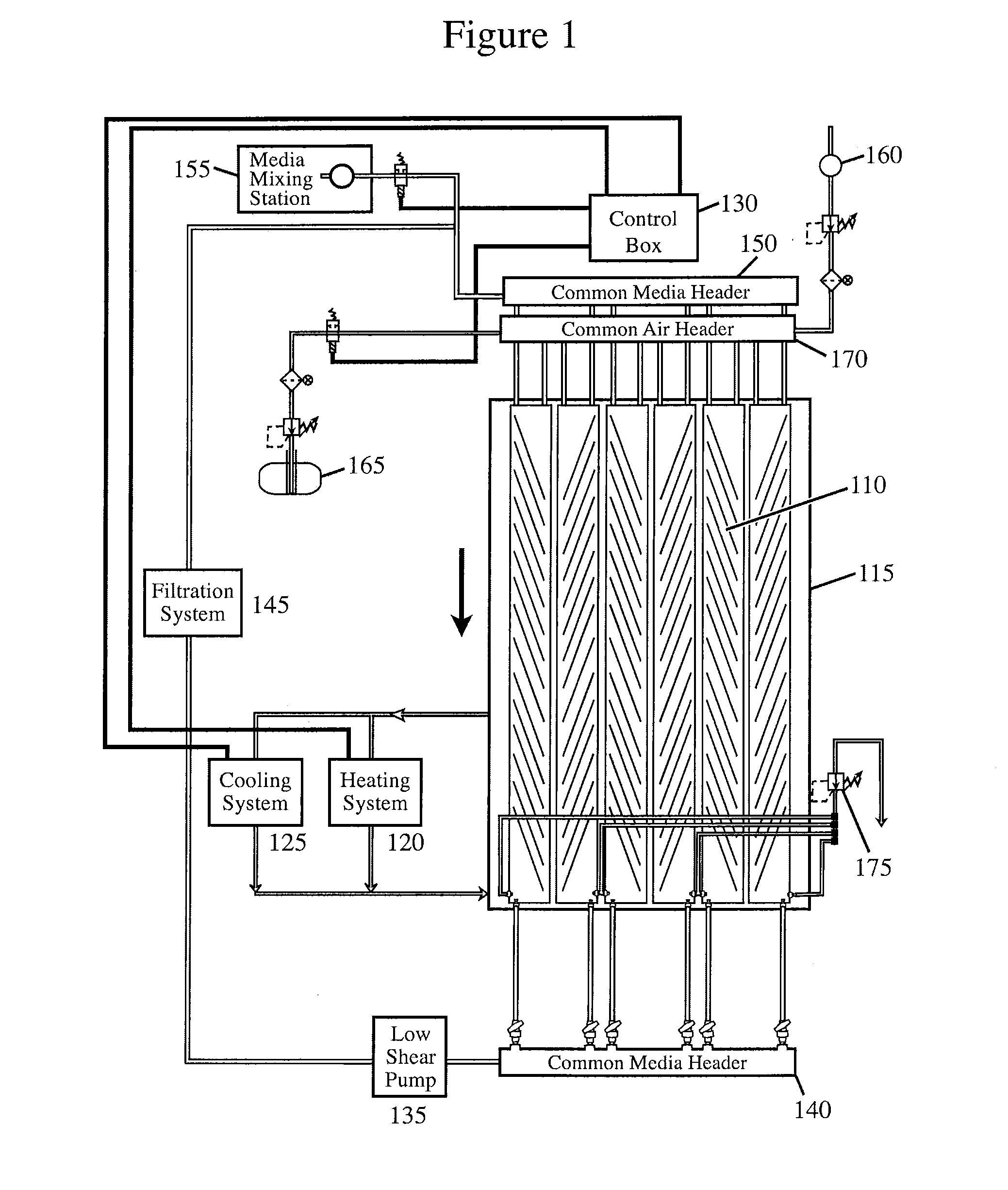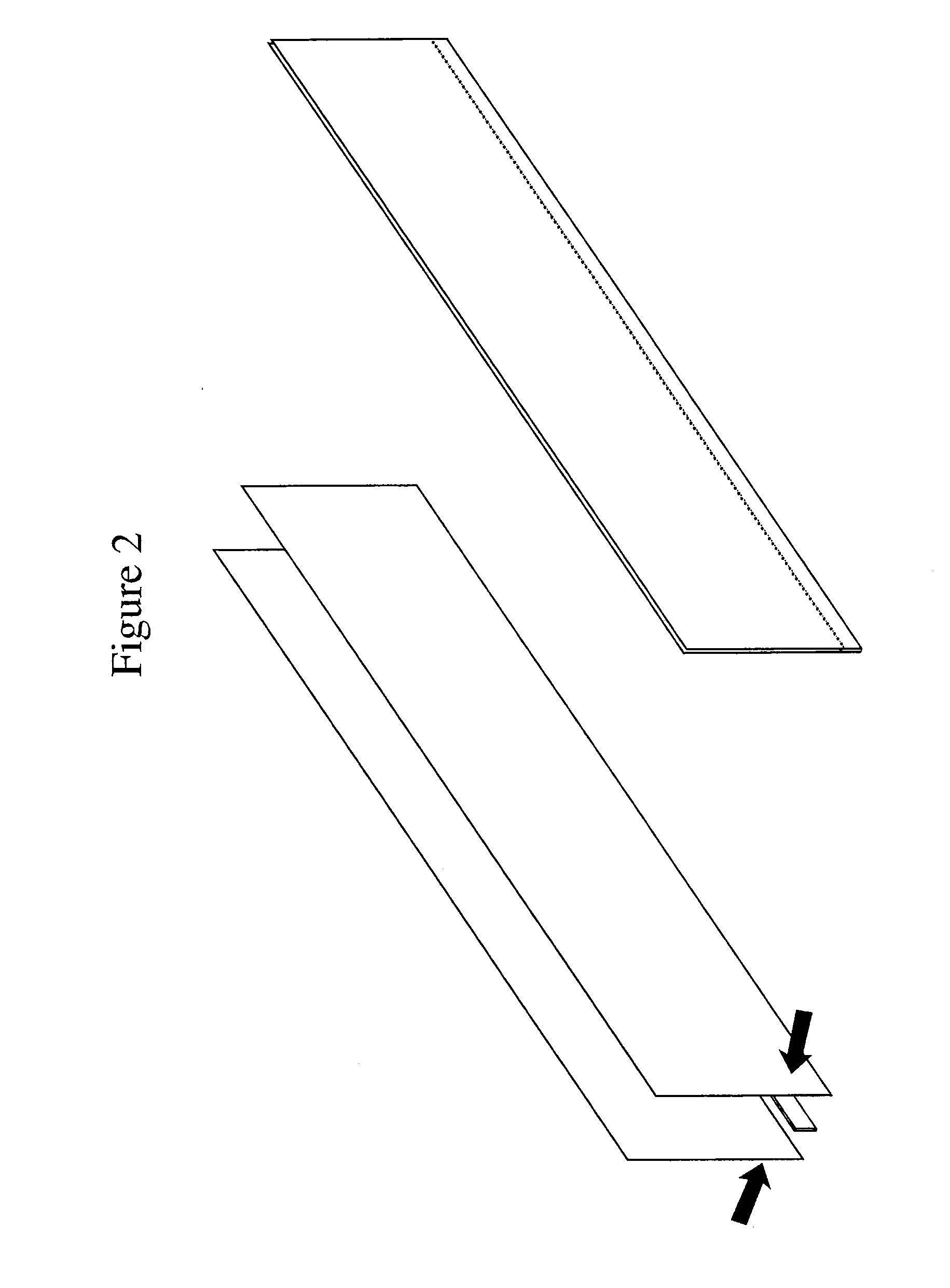Diffuse Light Extended Surface Area Water-Supported Photobioreactor
- Summary
- Abstract
- Description
- Claims
- Application Information
AI Technical Summary
Benefits of technology
Problems solved by technology
Method used
Image
Examples
example 1
Photobioreactor Construction and Use
[0125]Photobioreactor Construction
[0126]An exemplary photobioreactor was designed and built. In an exemplary embodiment as shown in FIG. 2, a 26 centimeter high, twenty meter long sheet of plastic film was laid flat on a table. A rotary puncture device was then rolled over the mid point of the sheet across the length of the plastic sheet. This created 0.25 mm diameter holes in the plastic every 2 centimeters. The plastic sheet was then folded over in half, with the holes 5 millimeters below the fold, to form the air tube.
[0127]This air tube was then placed between two sheets of plastic film, each being 91 centimeters in height and 20 meters in length. The bottom of the air tube plastic was placed flush with the bottom of the two large sheets of plastic film.
[0128]An impulse heat welding machine specifically designed for this process was used for the next step. This machine comprised an upper and a lower platen (FIG. 3A). The upper platen moves up ...
example 2
Algal Culture
[0151]The exemplary photobioreactor described in Example 1 was inoculated with Nannochloropsis occulata, Nannochloropsis sp., Tetraselmis suecica, Tetraselmis chuii, Chlorella salina, or Dunaliella tertiolecta. The Dunaliella tertiolecta algal culture was cultivated and grown in the photobioreactor system. Cell densities of up to but not limited to 45 million cells per milliliter (1.5-2.3 g / L) were achieved for Dunaliella tertiolecta.
[0152]Algae grown in a different photobioreactor with similar characteristics were harvested and lipids were extracted from the algae. The triglycerides were converted into biodiesel using a batch transesterification process.
example 3
Enhanced Lipid Production by Nutrient Limitation
[0153]Tetraselmis suecica was grown for 5-8 days in f / 2 medium with an additional 0.5 g-2 g of NaHCO3 / L, pH 7.2-7.5 to the maximum cell density in a range of 10-62×106 cells / mL. The dry weight was 1.4-11 g / L, respectively under continuous agitation with CO2 (1-2%). NaNO3 and NaH2PO4.H2O were added as needed. After reaching maximum cell density no additional CO2 was provided. Neutral lipids were formed in 24 h after reaching maximum cell density and discontinuation of CO2 supply. pH rose from 7.5 to 10-11. Rising of pH is an indicator of lipid production.
[0154]The dynamics of lipid formation after 24 h was monitored using fluorescence measurements with Nile Red. Algal samples were diluted to an optical density of 0.1 at wavelength of 750 nm. 35 μL of Nile Red in DMSO was added to 3.5 mL of the dilute algae to the final concentration of 1 μg / ml. The sample was thoroughly mixed and read after five minutes incubation (a longer incubation t...
PUM
 Login to View More
Login to View More Abstract
Description
Claims
Application Information
 Login to View More
Login to View More - R&D
- Intellectual Property
- Life Sciences
- Materials
- Tech Scout
- Unparalleled Data Quality
- Higher Quality Content
- 60% Fewer Hallucinations
Browse by: Latest US Patents, China's latest patents, Technical Efficacy Thesaurus, Application Domain, Technology Topic, Popular Technical Reports.
© 2025 PatSnap. All rights reserved.Legal|Privacy policy|Modern Slavery Act Transparency Statement|Sitemap|About US| Contact US: help@patsnap.com



